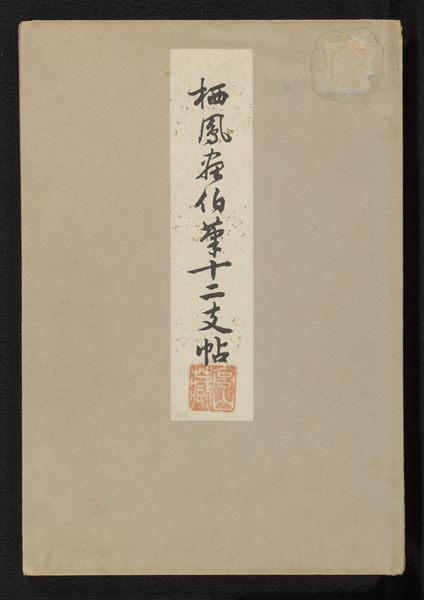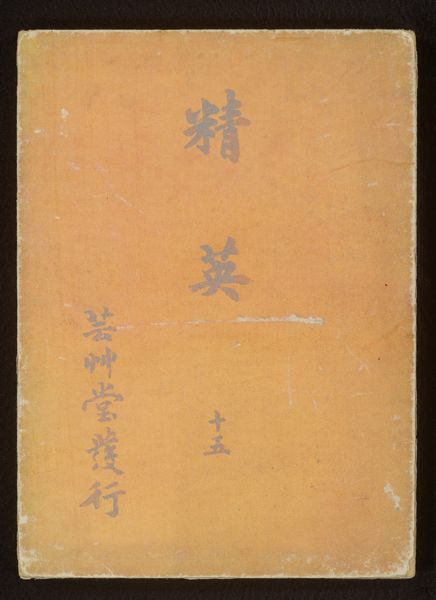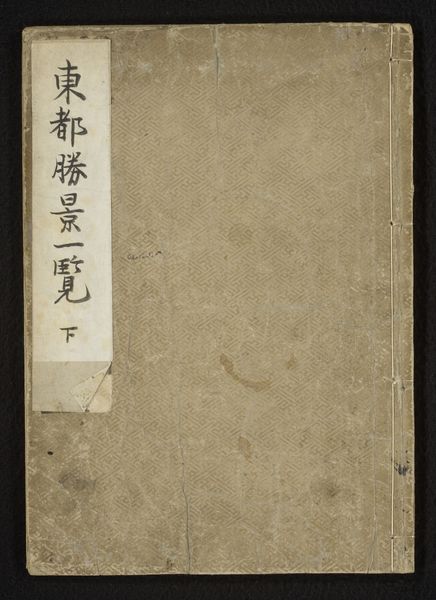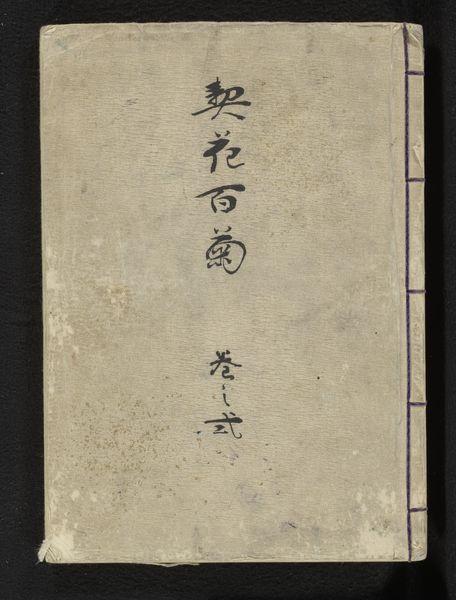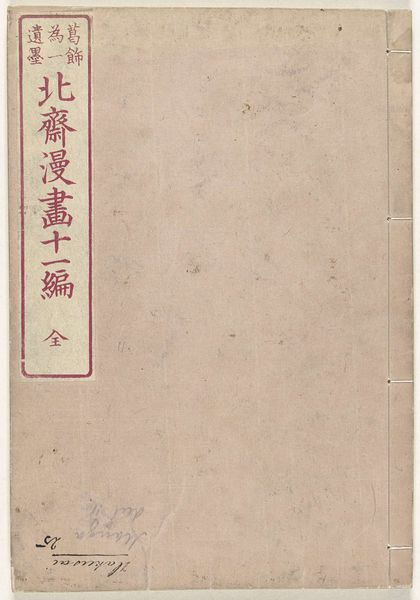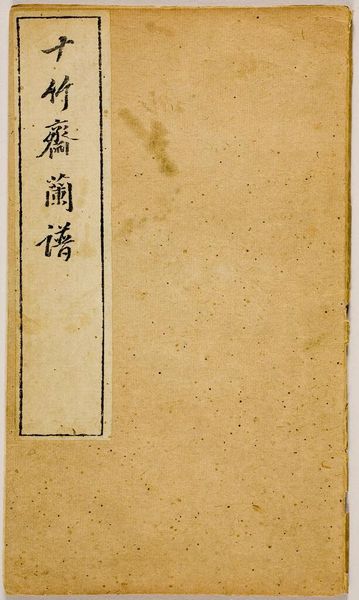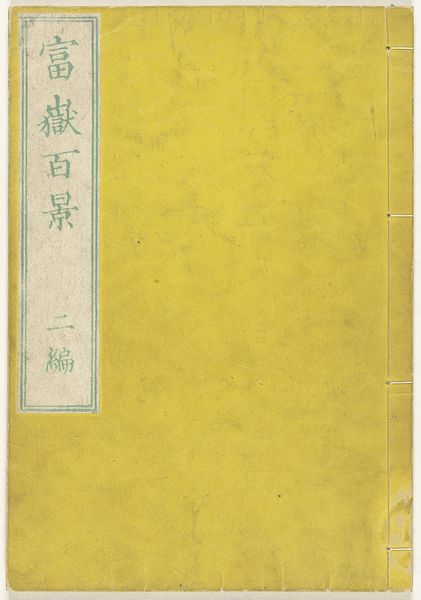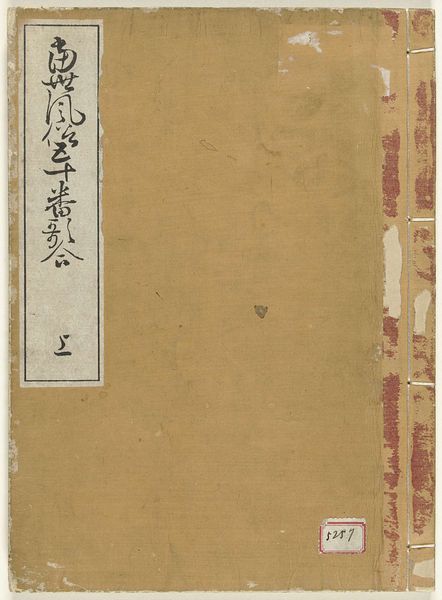
drawing, print, paper, ink
#
drawing
# print
#
asian-art
#
ukiyo-e
#
paper
#
ink
#
calligraphy
Dimensions: 5/8 × 7 1/4 × 10 1/8 in. (1.59 × 18.42 × 25.72 cm)
Copyright: Public Domain
Curator: This is the “Kōrin Picture Album,” possibly from 1802, held here at the Minneapolis Institute of Art, crafted by Nakamura Hōchū using ink and color on paper. What strikes you upon seeing this? Editor: The restrained palette! Such muted earth tones, almost monochrome. The textural contrast between the crisp calligraphy on the label and the organic feel of the worn paper is what really draws my eye in, inviting close examination. Curator: Yes, the aged quality is significant. Considering Hōchū's background, it's essential to understand that albums like these served not only as art objects, but as crucial tools for transmitting design patterns across artisanal trades, essentially democratizing Kōrin's influential aesthetic. Editor: And democratizing, as you say, in part because of its embrace of printmaking – the mechanism of its production allowing for dissemination. It's intriguing how he has blended both printmaking techniques and the art of drawing here, and how each page within this album has its own structure and arrangement. Curator: Precisely. Look at the labor invested in replicating these designs, making Kōrin's motifs accessible to a broader artisan class who were making ceramics or textiles. This connects high artistic ideals to the daily lives of ordinary people, who consume those wares. Editor: So, the formalism here serves a function beyond aesthetics. It's not just the balance of positive and negative space, the carefully considered composition; it's about the accessibility and application of those principles in the world. The artist and artisan as one. Curator: Exactly. It bridges those supposedly separate realms of art and craft, using the print medium to facilitate artistic production and distribution within society. The "Kōrin Picture Album" isn't simply a beautiful object; it's a powerful document of its era’s creative landscape. Editor: A testament to how artistic expression can be interwoven with material culture and everyday existence. Looking at it, it reveals layers that touch upon social, economic, and, obviously, artistic production practices of the era. Thank you.
Comments
No comments
Be the first to comment and join the conversation on the ultimate creative platform.
